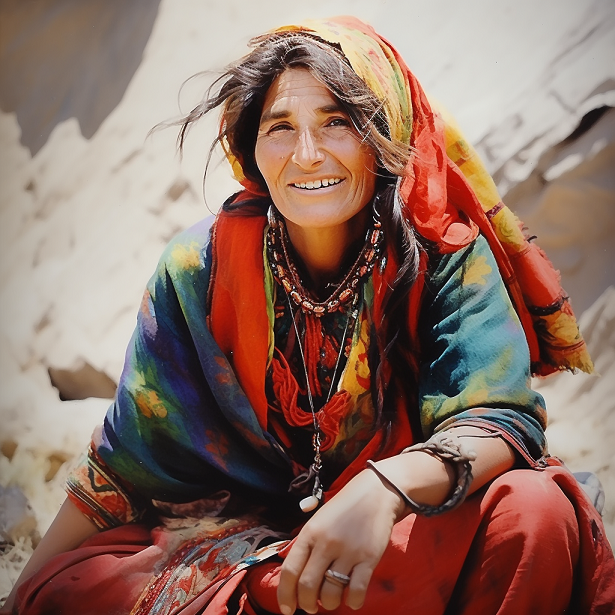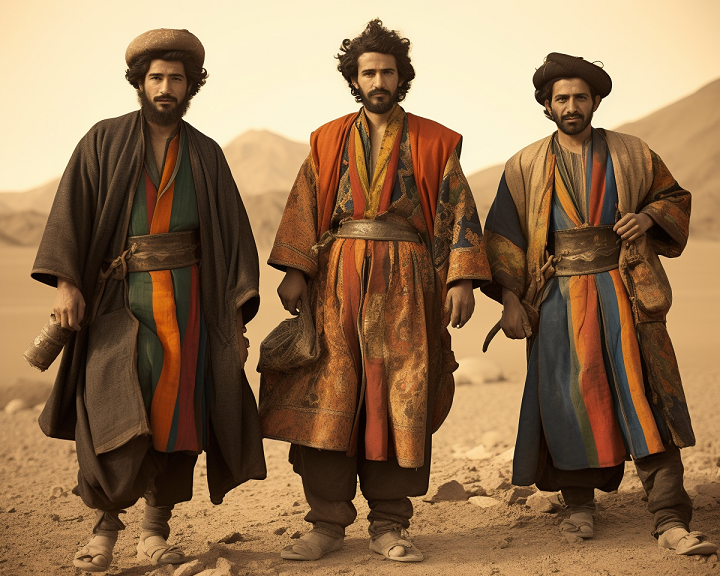In the rugged terrains of Luristan, tribal politics weave a complex tapestry of authority, negotiations, and responses to external influences, as vividly captured by Freya Stark during her travels. Stark’s journey brings to light the intricate social hierarchy and the pivotal role of tribal leaders in maintaining order and facilitating trade within these communities. Her exploration into the heart of Luristan and her encounters with its people are masterfully chronicled in her books, where she delves into the nuances of tribal dynamics and the resilience of these communities against the backdrop of Iran’s broader socio-political landscape. Through her keen observations and eloquent storytelling, Stark’s writings serve as a window into the lives of the Luristani tribes, highlighting her ability to illuminate the complexities of human societies and the enduring spirit of the people she met along her remarkable journeys.
Tribal Authority
Tribal Leadership and Authority are pivotal in Lur society, as evidenced by Stark’s interactions with ‘Abdul Khan, a tribal chief. With regards to the purchasing of locally found antiques Stark notes:
“‘Abdul Khan, with most remarkable disinterestedness, now and then told me I was giving too much, and tossed me a dagger or a bowl for one shilling instead of two, to the disgust of whichever of his clansmen it happened to belong.”
Freya Stark: The Valley of the Assassins
This instance not only showcases the chief’s influential role in regulating trade but also his capacity to mediate and ensure fairness, a crucial aspect in maintaining his authoritative status among the tribesmen. In this society, respect for the chief’s decisions is paramount, as Stark observes that no one contradicts or refuses to sell when the chief instructs them to do so, highlighting the deep-rooted respect for hierarchical structures within the tribe.
Tribal Tensions
Navigating through Tribal Tensions is another aspect that Stark skilfully documents. The valleys and hills of Luristan are not just geographical features but also spaces of negotiation and suspicion. For instance, Stark’s encounter with a Moslem trader from Dizful introduces a scenario where tribal relations and suspicions come to the forefront. Stark describes:
“His oily manners made an unpleasing contrast with the friendly outspokenness of the tribesmen, and he would have done his best to prevent me from entering farther into the country if he could.”
This encounter illustrates the cautious and often tense interactions that are a part of daily life in these regions, with each party constantly balancing between cultural norms and individual interests.
Tribe Vs National Government
The Impact of External Forces on Tribal Society is a recurrent theme in Stark’s observations. The Persian law of antiquities, for example, introduces a sense of caution among the tribesmen due to its implications for their traditional grave-digging practices. Stark notes their nervousness about the law, which “has brought punishment for illicit dealing in bronzes onto several of the tribes.” Furthermore, the introduction of modern education, as mandated by the government, creates a ripple of change and resistance within the tribal communities. Stark recalls an incident where ‘Abdul Khan’s nephews were meant to be sent to school in Khurramabad, leading to weeping and eventual substitution by less important boys from the tribe, illustrating the tribes’ reluctance and pragmatic adaptation to the encroaching external influences.
In essence, Stark’s journey through Luristan uncovers a world where tribal politics are deeply influenced by leadership, internal dynamics, and external pressures. The authority of tribal leaders, the intricacies of tribal negotiations, and the impact of modernization are all threads in the complex fabric of Lur tribal society, providing a fascinating glimpse into a world where tradition and change coexist in a delicate balance.
Freya Stark’s Cultural Observations: Lur Society and Hospitality
Freya Stark’s travels through Luristan offer a rich tapestry of cultural insights, particularly highlighting the Lurs’ approach to society and hospitality. Stark’s narrative paints a vivid picture of the everyday life and customs of the Lur people, emphasising the inherent warmth and tradition of hospitality that permeates their society.
Stark’s observations on Lur Society and Hospitality shed light on the intricate blend of generosity and cultural etiquette deeply embedded in Luristan. She writes, “In spite of their bad reputation, I was sorry to leave the tribesmen and their mountains… but in their tents, they were mostly agreeable and friendly, great lovers of a joke, and very good at conversation.” This reflection not only contradicts the often-negative stereotypes associated with the tribal people but also celebrates their genuine spirit of camaraderie and community engagement.
Nomadic Living Conditions
The living conditions within the tribes also reflect a certain cultural richness and adherence to traditional lifestyles. Stark notes the quality and structure of the tents, stating, “These were far better tents than we had seen before, and the people lived in them all the year round. They were enclosed in a mud wall about five feet high which kept the wind out.” These details provide an insight into the Lurs’ adaptation to their environment, crafting homes that are both functional and a focal point for family and communal life.
Stark further comments on the nature of hospitality, an essential aspect of Lur culture, by highlighting the reluctance of tribes to accept anything in return for their hospitality. She observes, “Even among a quite unfriendly tribe, it was always difficult to make them accept anything of this sort after the night’s lodging: hospitality is given free, and it was never stinted.” This sense of pride and honour in providing for guests underscores a universal value deeply rooted in their identity and social norms.
Through these cultural observations, Stark not only provides an ethnographic account of the Lur people but also brings to light the nuances of their daily lives, values, and the unwritten code of conduct that governs their social interactions. The Lur society, as depicted through Stark’s narrative, is one where hospitality is not just a courtesy but a way of life, reflecting a profound respect for others and a commitment to maintaining social harmony. The detailed portrayal of their lifestyle, attitudes, and customs contributes significantly to our understanding of the rich cultural landscape of Luristan, painting a picture of a community where tradition and hospitality are cherished and preserved.
Changing Lifestyles and Perceptions
Freya Stark’s journey through Luristan provides a compelling narrative not only of the present but also a reflection on the inevitable change encroaching upon traditional societies. Her keen observations delve into the alterations in lifestyles and perceptions among the Lur people, brought about by modern education, government policies, and the gradual permeation of modernity into their isolated world.
The encroachment of government policies, especially the Persian law of antiquities, is another aspect Stark highlights. This law, meant to protect historical artefacts, inadvertently affects the tribe’s ancestral grave-digging practices, instilling a sense of caution and altering their longstanding traditions. Stark’s observations underscore a critical juncture in Lur society, where the preservation of cultural heritage by external forces clashes with the tribe’s traditional ways of life.
Amidst these changes, Stark also touches upon the tribes’ perception of these shifts. The juxtaposition of old and new, tradition and modernity, brings about a complex set of emotions and strategies among the Lur people. While some view these changes as an infringement on their way of life, others adapt and find ways to incorporate new practices without losing the essence of their cultural identity.
Through her vivid and empathetic portrayal, Stark brings to life the nuanced and often conflicting emotions that accompany change. Her narrative serves as a testament to the resilience and adaptability of the Lur people, as they stand at the crossroads between preserving their rich cultural heritage and embracing the inevitable tide of modernization. As the world around them changes, so too do their lifestyles and perceptions, painting a bittersweet picture of a society striving to maintain its identity amidst the relentless march of progress.
Gender and Social Roles
Freya Stark’s immersion into Luristan not only allowed her to observe the broader societal structures but also gave her insight into the roles and perceptions of gender within the tribal communities. Her narrative provides a thoughtful examination of the complex fabric of social roles, particularly focusing on women’s positions in the society and her own experiences as a female traveller among the Lurs.
Stark’s reflections on the roles of women within the Lur tribes highlight a society where gender roles are clearly demarcated yet carry their own form of respect and importance. She observes the women’s significant role in the domestic sphere and notes their influence within their families and larger community circles. The women, often seen in their large turbans and managing the household affairs, are integral to the functioning of the Lur society. Stark’s interactions with them reveal a world where, despite the heavy demands of tribal life, women command a certain respect and authority.

As a female traveller, Stark herself navigates a unique position within the Lur society. Her gender allows her a different level of interaction and insight into the lives of Lur women, yet it also places her in unusual circumstances within a predominantly male-oriented tribal setting. Stark’s presence in these communities challenges and perhaps even shifts the locals’ perceptions of gender roles, as she is an active, inquisitive participant in their world, breaking the mould of traditional female passivity seen in the culture.
The social hierarchy and division of labour in Luristan are also evident in Stark’s observations. The community is structured in a way that everyone, regardless of gender, has a role that contributes to the survival and prosperity of the tribe. Men’s roles are primarily outside the home — in herding, trading, or negotiating tribal politics — while women’s roles, though centred around the home, are equally crucial. Stark’s narrative does not shy away from the hardships faced by both genders, painting a realistic picture of life in Luristan, where the harsh environment and the need for communal cooperation dictate a strict division of labour.
In her thoughtful and nuanced narrative provided in “The Valley Of The Assassins“, Stark provides a window into the gender dynamics and social structures of Luristan. Her observations reflect a society where gender roles are deeply embedded but are also more complex and nuanced than they might appear at first glance. As Luristan faces the winds of change, these roles and perceptions are also in flux, adapting and evolving with the times. Stark’s reflections offer a profound insight into the human side of tribal politics and cultural transitions, showcasing the resilience and adaptability of individuals within these communities.

